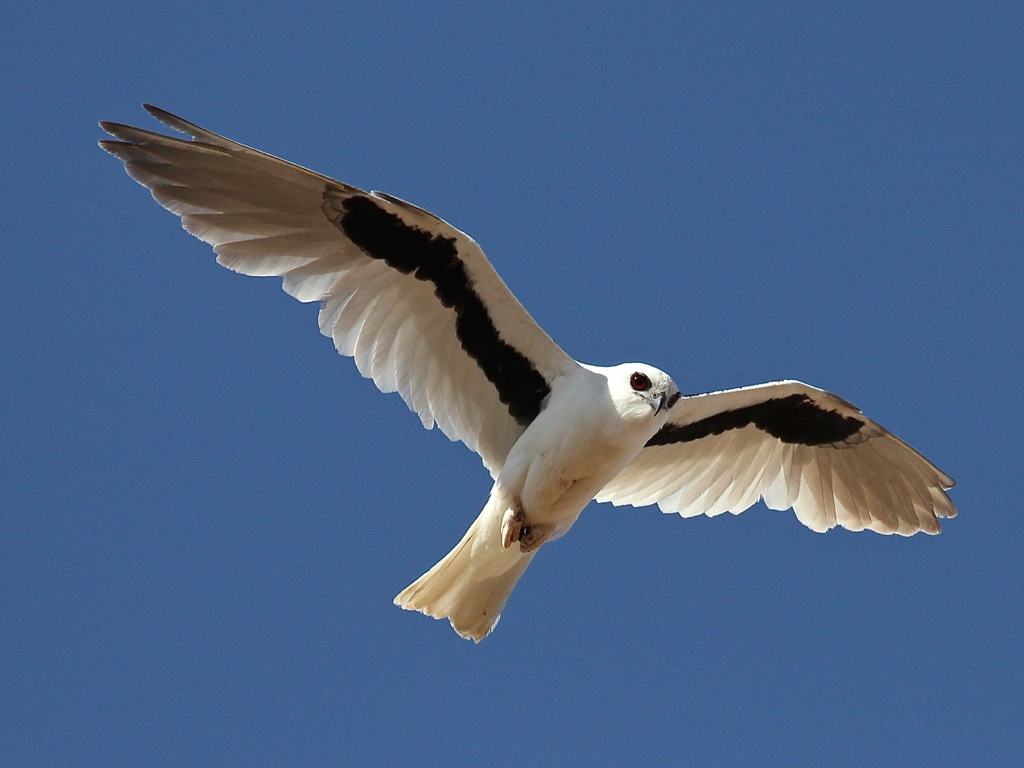
Elanus scriptus
SUBFAMILY
Accipitrinae
TAXONOMY
Elanus scriptus Gould, 1842, Cooper Creek, South Australia.
OTHER COMMON NAMES
French: Йlanion lettrй; German: Schwarzachselaar; Spanish:
Elanio Escrito.
PHYSICAL CHARACTERISTICS
13.4–14.6 in (34–37 cm); male about 9.2 oz (260 g); female
11.3 oz (320 g). Distinctive black band around eyes.
DISTRIBUTION
Mainly Central Australia.
HABITAT
Arid and semi-arid grasslands and tree-lined watercourses. Following
irruptions may reach more coastal grasslands and open
woodlands.
BEHAVIOR
One of the few truly nocturnal accipitrids. Roosts by day in
leafy trees, sometimes in colonies of hundreds when not breeding.
Follows cycles of main rodent prey, especially long-haired
rats (Rattus villosissimus), which plague irregularly every five to
10 years following good rains that fill inland waterways. Breeds
when rats abundant, then disperses widely, often reaching
coastal areas as rat numbers wane, then usually perish. Presumably
a core of adults remains inland to repopulate when conditions
allow.
FEEDING ECOLOGY AND DIET
A rodent specialist, mostly long-tailed rat, but also takes other
small mammals and lizards, and large insects. Usually hunts by
night when main prey active; quarters the ground, hovers, and
drops vertically onto prey.
REPRODUCTIVE BIOLOGY
Typically, breeds in loose colonies in coolibahs along inland
(arid zone) watercourses whenever food is abundant. Monogamous.
Builds a nest of small sticks lined with leaves or dung.
Egg-laying mostly in late-winter to spring and autumn. Clutch
size is usually four or five incubation about 31 days; nestlings
fledge at about five weeks.
CONSERVATION STATUS
Not threatened. Generally rare and rather mysterious due to
poor knowledge of movements (here today, gone tomorrow
habits) and boom and bust breeding strategy. Some threat
from overgrazing of already fragile landscape and breeding
colonies sometimes invaded by feral cats.
SIGNIFICANCE TO HUMANS
None known.
Other popular Animals
Photo Gallery of - Letter-winged kite




 Animalia Life
Animalia Life